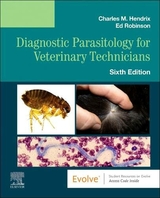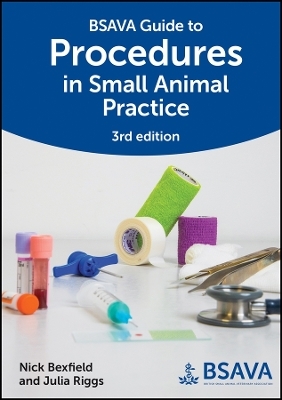
Diagnostic Parasitology for Veterinary Technicians
Mosby (Verlag)
978-0-323-38982-2 (ISBN)
- Titel ist leider vergriffen;
keine Neuauflage - Artikel merken
Clear, concise coverage simplifies information on the most commonly encountered internal and external parasites, preparing you for credentialing exams and the veterinary clinic.
More than 470 full-color photos show exactly what ova, adult parasites, and parasitic diseases look like, so you can identify them more easily when viewing lab samples.
Step-by-step guidelines in the Laboratory Procedures chapter describe how to gather samples and how to perform the laboratory techniques used in identifying parasites.
Emphasis on the zoonotic potential of parasites helps you alert clients and other health care workers to the significance of zoonotic parasites and shows ways in which you can prevent transmission of a zoonotic parasite, condition, or syndrome from animals to humans.
Logical chapter organization follows the sequence of parasitology classes, beginning with a basic overview of external parasites, internal parasites, and nematodes, followed by chapters that go into detail of the parasites by host species. An appendix lists the parasites of each species and shows their location in the text, making information easy to find.
Heartworm section helps you recognize and treat heartworms with an in-depth discussion of the performance and interpretation of diagnostic tests for this major parasite.
Summary tables show how to categorize parasites, and include such categories as body systems affected, taxonomic grouping, host species, and location in host.
Table of parasites at the front of the book is arranged by host species and includes page numbers for cross-reference throughout the book.
Vet Tech Threads design makes learning easier with chapter outlines, chapter objectives, key terms, and Technician Notes in every chapter.
Chapter on terminology familiarizes you with the basic language and classification scheme of parasitology for more effective communication with clients and colleagues.
Flash cards on the Evolve companion website help you learn and memorize key facts about the major parasites, including audio pronunciations.
Workbook/textbook format provides immediate review tools through matching exercises and questions for thought and discussion at the end of each chapter.
NEW case studies provide more opportunities to apply what you have learned, and bring to life a subject that can be dry and difficult.
UPDATED information throughout provides the most up-to-date coverage of the parasites most often seen in veterinary practice.
NEW! End-of-chapter matching exercises and online activities make study and review easier.
Dr. Hendrix is a professor of parasitology at Auburn University College of Veterinary Medicine, and he has received the Norden Distinguished Teaching Award twice and the Auburn University Student Government Teacher of the Year Award twice. Mr. Robinson currently teaches parasitology to veterinary technology students at Penn Foster, an online program.
Table of Parasites by Host Species
1. The Language of Veterinary Parasitology
2. Parasites That Infect and Infest Domestic Animals
3. Introduction to the Nematodes
4. Nematodes that Infect Domestic Animals
5. The Phylum Platyhelminthes, Class Cestoda
6. Tapeworms that Parasitize Domestic Animals and Humans
7. The Phylum Platyhlminthes, Class Trematoda
8. Trematodes (Flukes) of Animals and Humans
9. The Phylum Acanthocephala
10. The Protozoans
11. Common Protozoans That Infect Domestic Animals
12. Introduction to the Arthropods
13. Arthropods That Infect and Infest Domestic Animals
14. Introduction to the Phylum Arthropoda, Subphylum Pentastomida
15. The Phylum Annelida
16. Parasites of Public Health Importance in Veterinary Parasitology
17. Common Laboratory Procedures for Diagnosing Parasitism
18. Reference to Common Parasite Ova and Forms Seen in Veterinary Medicine
Appendix: Parasite Reference List by Species and Parasite Type
Glossary
| Erscheinungsdatum | 14.10.2016 |
|---|---|
| Zusatzinfo | Approx. 340 illustrations (340 in full color); Illustrations, unspecified |
| Verlagsort | St Louis |
| Sprache | englisch |
| Maße | 191 x 235 mm |
| Gewicht | 910 g |
| Themenwelt | Veterinärmedizin |
| ISBN-10 | 0-323-38982-1 / 0323389821 |
| ISBN-13 | 978-0-323-38982-2 / 9780323389822 |
| Zustand | Neuware |
| Informationen gemäß Produktsicherheitsverordnung (GPSR) | |
| Haben Sie eine Frage zum Produkt? |
aus dem Bereich



